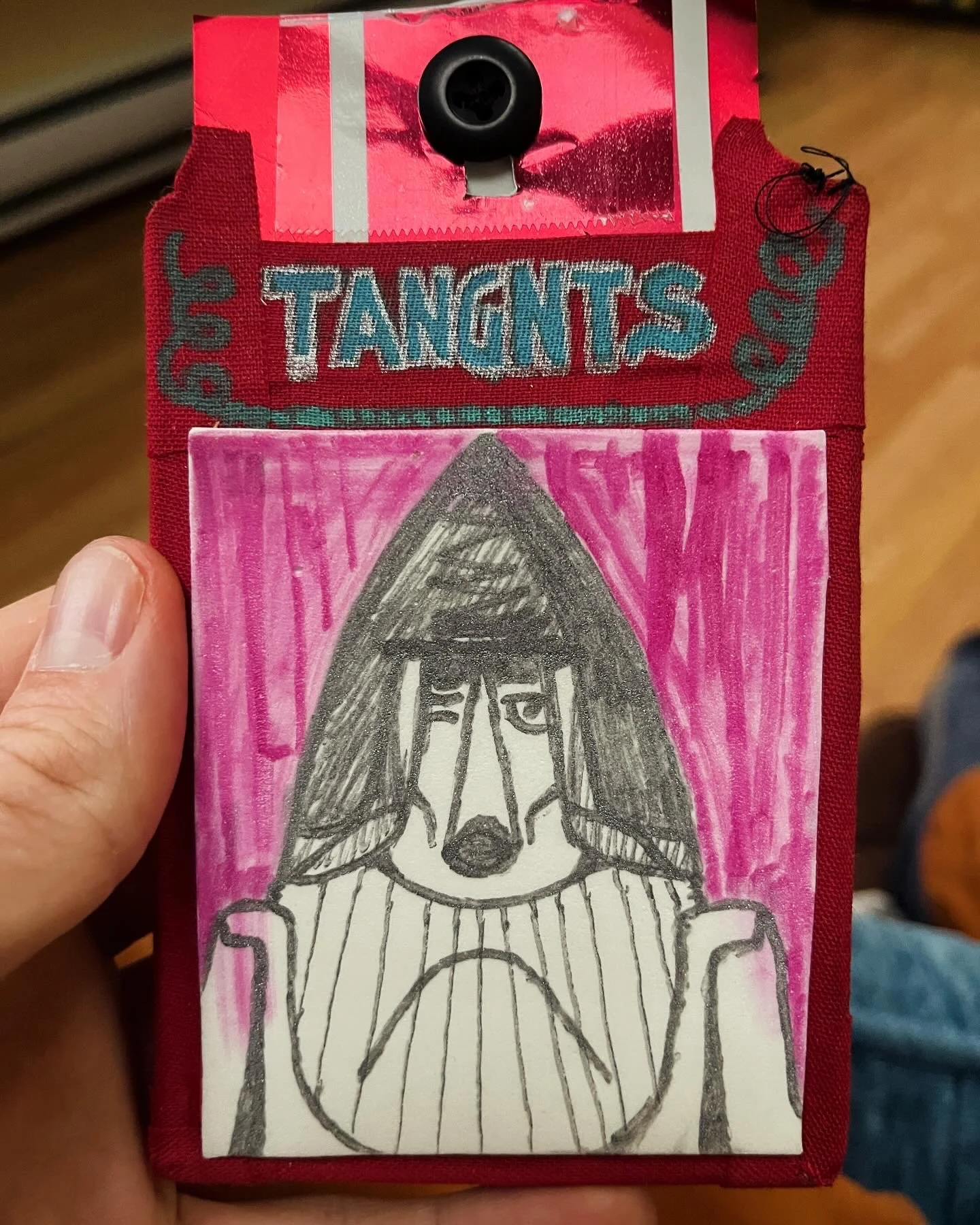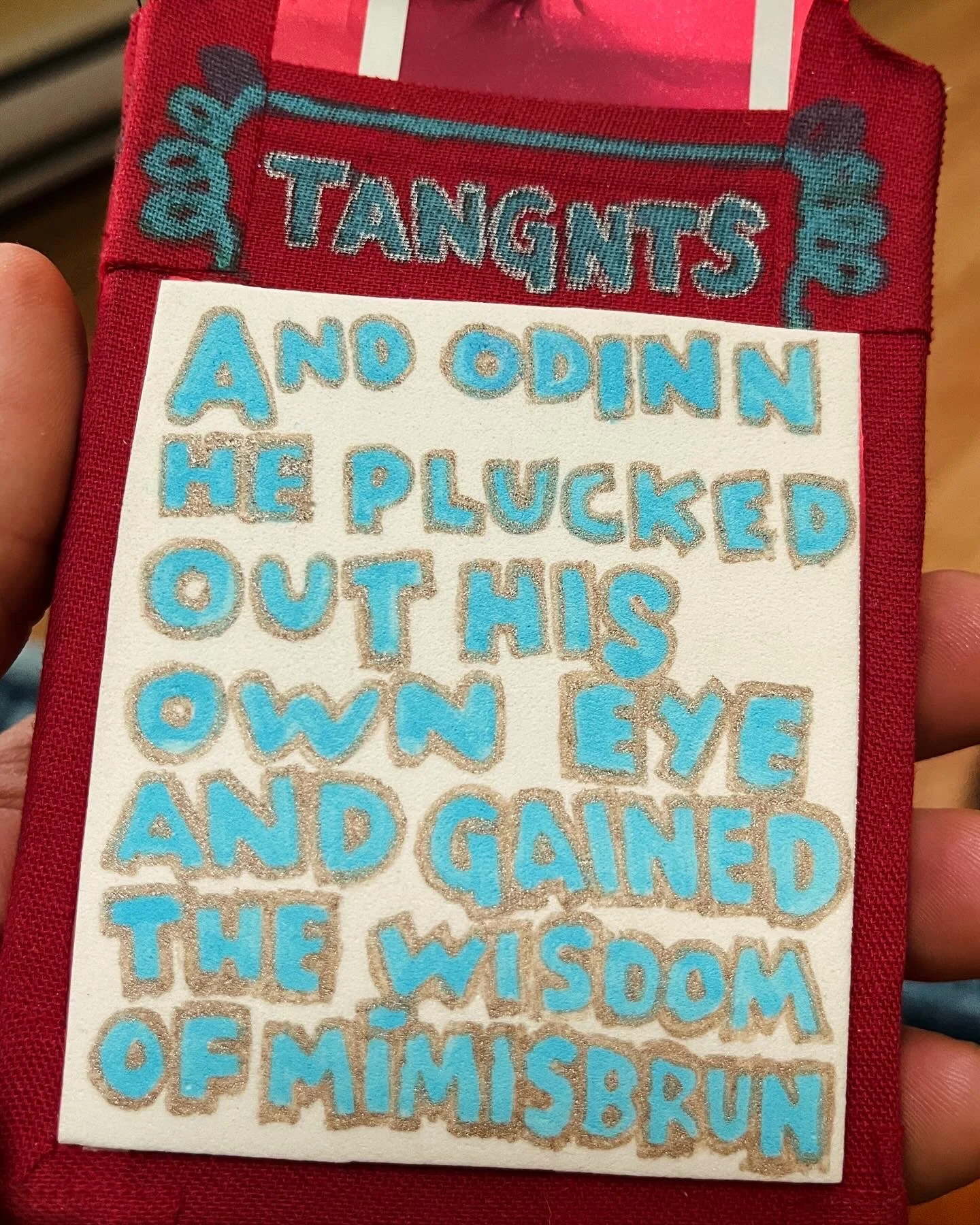
Make it stand out
Play Gamez Please
TANGENTS
A game designed by Billy Halibut
Them’s the rules! (below)
Upset the Set Up
Shuffle. Sit side by side.
Randomly deal eight cards, and a black block card, for a total of 9 cards to each player.
One player will use the illustrated sides, The Illustrator. One will use the sides with written poetry, The Poet.
Decide Who Goes First
Play rock, paper, scissors, or roll a die to see who goes first.
Acknowledge The Grid
Players take turns placing their cards on any spot in the 4x4 grid.
Figure Out How to Win
When the 4x4 grid is full, the game is over.
The player who owns the most cards on the board wins. Ties are possible. If you are the Illustrator, you own a card when its illustration is face-up; if you are the Poet, you own a card when its poem-side is face-up.
Learn How to Play
Flip your opponent's card by placing your card in a space next to it or diagonal from it. If the card's edge or corner dot-value is higher than an adjacent opponent card’s edge or corner dot-value, it flips to your ownership. OR Play a higher number next to or diagonal from a lower number to flip it. Play any number against a blank side to flip it—but if your first placement is against a blank, you may only flip that one card, no matter the dot-value.
Play cards with the shorter top edge facing the bottom or top. You cannot play the longer edges facing the top or bottom of the board.
For example, You are The Poet, your opponent is The Illustrator. They have played a card in the middle with the the image-face of the card facing up. You place a card in the spot below it with the text-face of the card facing up. The top edge of your card shows a 3 dot-value. The bottom edge of their card shows a 1 dot-value. Placing your card below theirs with the top 3 dot-value edge facing their bottom 1 dot-value edge flips their card to your ownership. You will then lay their card back in the same spot, but with the written side face up. You may rotate their flipped card in either direction.
Cards can be played rotated in two orientations. Cards cannot be played sideways. The short edges always face either the top or bottom of the board.
Chain Flip to Victory
You can flip your opponent’s cards in a chain.
You can only flip opponent's cards in one direction. You can only chain in one direction. You cannot flip two cards at once. You cannot chain cards you own.
If the card's edge or corner value is higher than an adjacent opponent card’s edge or corner value, it will flip to your ownership. The difference between the values of your placed card and your opponent’s card, for instance 3 to 1 has a difference of 2, equals you how many of your opponent’s cards you can chain-flip. Opponent cards’ border values must be lower than your card’s corresponding value.
For example, if you play a 4 against a 1, and your opponent has three cards connected to it, you may be able to chain-flip up to three of their cards. If the dot-values pointing to the cards down the chain are higher than corresponding dot-values on an opponent’s card, then you can flip the next one. Blank edges and corners prevent chain-flipping on the first placement. Past the first flip, blank sides and corners count as lower dot-values, and can be chain-flipped through.
When flipping, the dot-value you see laid out on the board is the dot value you use to flip the next card in the chain. That means you can ignore the values on the side of the card you flipped to your ownership.
The Mysterious Block Card
The block card can only be played on another card.
The block card prevents chains or flips of cards they are played on. They can be played on an opponent's card or your own card. The block card cannot be played on the first turn or the last turn.
I Suggest You Predict, Plan Ahead
You don't have to play cards right next to each other. You can use blank sides to protect the vulnerable sides of your other cards. You can lay bait cards that you know the opponent will want to flip, to gain a later advantage. Pay attention to the orientations you place your opponent’s flipped cards, because they will create a new board state. Try to leave the board state to your advantage, so your opponent cannot easily undo your work. Have fun exploring possible strategies!
~~
I Want to Say a Special Thanks to
Coco Poley, Will Hessian, Joe Fox Jr., Craig Dickie, Abbeth Russell, Walter Woodington, and all the play testers and early adopters who helped me blacksmith this game into a sharper sword and to sell my first copies. Thanks to XPress Copy in Portland, ME for helping me self-publish my first game! There are even copies floating around in Finland!


